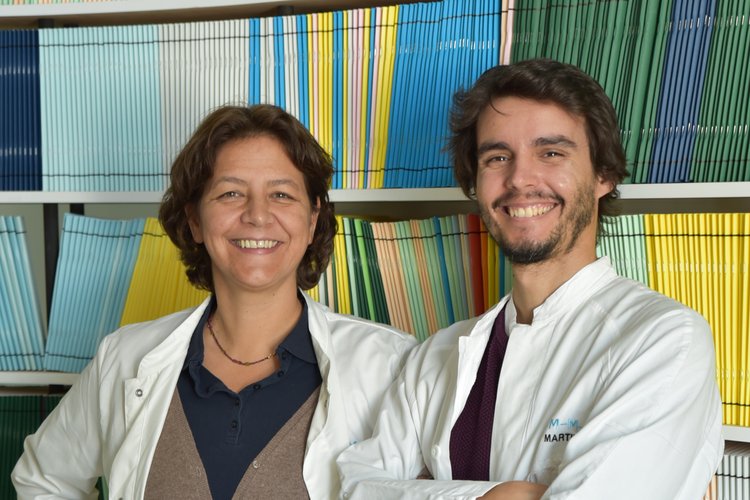Missing link between hemolysis and infection found
Share
Worldwide, millions of people suffer from hemolysis, the breakdown of red blood cells, such as those afflicted with sickle-cell disease, malaria or sepsis. These patients face an unprecedented risk of death from bacterial infections and the mechanism for this has remained unclear until now. In the latest edition of Nature Immunology, Sylvia Knapp’s Group at the CeMM and the Medical University of Vienna discovered how hemolysis causes infections and found a new means to prevent it, paving the way to new treatment possibilities
For decades, iron has been considered the prime suspect responsible for the high rate of bacterial infections in patients with hemolysis (bursting of red blood cells). A research group led by Sylvia Knapp, Director of Medical Affairs at CeMM and Professor of Infection Biology at the Medical University of Vienna, was now able to refute this theory: They revealed that heme-iron was not only failing to act as a willing nutrient to bacteria, heme was instead paralyzing the very innate immune cells sent to protect the host from the bacteria.
“Using in vitro and pre-clinical models, we could clearly demonstrate that heme acts on macrophages preventing these cells from eliminating bacteria.” explains Rui Martins, PhD student at CeMM and the Medical University of Vienna, and the first author of the study. The scientists discovered a completely unknown mechanism: The heme molecule interfered with the cytoskeleton of macrophages and thereby immobilized them.
“Through chemical proteomics and biochemical experiments, we discovered that heme interacted with DOCK8, which led to the permanent activation of its downstream target Cdc42, with deleterious effects”, explains Sylvia Knapp. In the presence of heme, the cytoskeletal resilience is lost, as filaments grow rampant in all directions, resulting in macrophage paralysis—in other words, the cells lose their ability to shape-shift and can no longer chase down and ‘eat’ the invading bacteria. The resultant impact is that bacteria can multiply virtually unrestricted.
The scientists were not only able to clarify the molecular effect of heme on macrophages, but moreover discovered that quinine, an approved drug, which is clinically used to treat malaria, can restore the functionality of paralyzed macrophages. “This is very promising. We conclusively demonstrate that it is indeed feasible to therapeutically ‘protect’ immune cells and to restore the body’s immune defense against bacteria in hemolytic conditions”, says Sylvia Knapp.
Publication:
Rui Martins, Julia Maier, Anna-Dorothea Gorki, Kilian V. M. Huber, Omar Sharif, Philipp Starkl, Simona Saluzzo, Federica Quattrone, Riem Gawish, Karin Lakovits, Michael C. Aichinger, Branka Radic-Sarikas, Charles-Hugues Lardeau, Anastasiya Hladik, Ana Korosec, Markus Brown, Kari Vaahtomeri, Michelle Duggan, Dontscho Kerjaschki, Harald Esterbauer, Jacques Colinge, Stephanie C. Eisenbarth, Thomas Decker, Keiryn L. Bennett, Stefan Kubicek, Michael Sixt, Giulio Superti-Furga, und Sylvia Knapp. Heme drives hemolysis-induced susceptibility to infection via disruption of phagocyte functions, Nature Immunology, 2016. DOI: 10.1038/ni.3590
Funding:
This study was in parts funded by the Austrian Science Fund (FWF) via the ERA-Infect framework and by the Science Fund of the Austrian National Bank.

